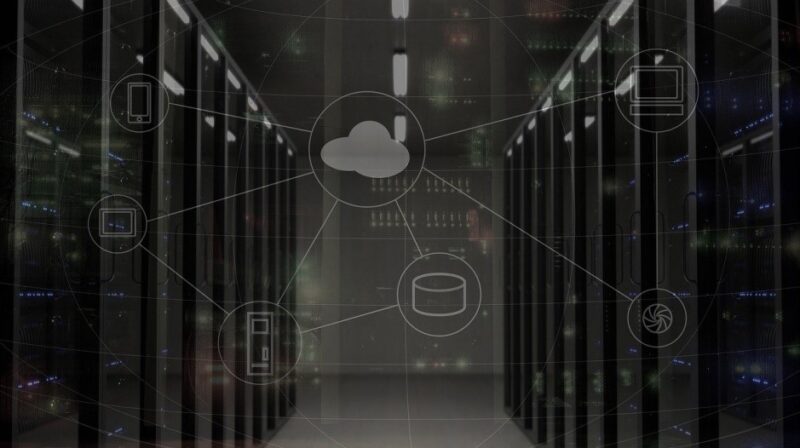Network architecture refers to the design or layout of a computer network. It consists how various computers and other hardware devices (printers, scanners, etc.) are interconnected to each other by using transmission equipment and communication protocols to facilitate data transfer between them. Network architecture can be designed both for a wired and a wireless environment.
Some of the important components of network architecture are:
Network components refer to various devices that are required to set up a network. The components are normally hardware devices used to interconnect various systems or computers.
Here is a list of components with their description and role in implementing a network.
- Sender – It refers to the computer that sends a request to access data or use resources shared over a network. The request normally goes to the server for processing.
- Receiver – It refers to the computer that receives the request to provide the data or other services (printing, scanning, etc.) to the sender.
- Message – It mainly refers to the processing request sent to the other computer. A message can be a simple text message, a document, an image, etc. All messages are sent in the form of data packets within a network.
- Router – It is a device that helps in routing or guiding data in a network using the IP address of the receiving computer. The network has a number of routers that forward the data from one point to another till it reaches its final destination.
- Filters – They are used to allow or block access to data within a network. They help in keeping the network data secure.
- Repeaters – It joins the segments of a network cable to sustain signal strength to ensure smooth and speedy transmission.
- Bridges – It connects two networks using the same protocol. However, it is not as capable as a router in connecting all the networks as a one large network.
- Switches – A switch is a device that helps in transferring innumerable data packets at the same time without leading to data collisions. It, therefore, avoids the slowing down of a network. It has a number of ports that store the IP address of every device that is directly or indirectly linked to it on every port. In other words, it makes a direct connection between the two computers.
- Protocol – It is a collectively agreed upon method of communication within a network. All computers and devices operate as per the protocol. Different networks can have different protocols. Some of the common ones are TCP, Kermit, and X.25. Basic considerations like the network speed, need for data compression, method of identifying and rectifying errors in data packets, etc. are taken into account while choosing a protocol.
- Gateway – It is a device that facilitates connection between two different networks.
Well-configured network architecture helps in:
- Simplifying business operations – The time and effort spent earlier gets reduced when business activities are conducted within a network. It ensures speedy transfer of documents, instant exchange of messages, and easy tracking of work-in-progress.
- Releasing resources – Efficiency in business operations releases resources for utilization in other productive channels thereby reducing the operational cost of an organization.
The backbone of any network architecture is its design. A sound network design ensures maximum return on investment and optimal network performance in terms of speedy data transfer, network security, and data-carrying capacity.
Some the major tasks that the architecture team conducts are given below:
- Project planning – The first step is to have clear and detailed information about the business activity, client expectations, level of investment, and the level of technology already implemented in an organization. Remember, a failure to identify the needs will not give results as expected leading to a waste of time, effort, and money.
- Choose an appropriate network topology – A number of considerations have to be taken into account to select the right physical layout for connecting all the devices of a proposed network. For example, a linear bus topology is the cheapest, an easy expansion of the network is possible with a star topology, and the linear bus topology uses cables of shorter length.
- Estimation of the data traffic – An estimation of the amount of transfer of data within the network helps in determining the required size of the network, possible system configurations, system installation requirements, set-up cost, and the transmission equipment required.
- Designing of the IP network – It is an integral task of designing any network architecture that needs to be performed carefully to ensure smooth flow of data transmission.
Troubleshooting Network
Despite of perfect installation of the complete network architecture, there may arise many troubleshooting concerns. Some of the most popular troubleshooting are:
- Duplicate IP Address: Comes with an error ‘Address Already in Use’. You could resolve the same by disabling the DHCP server.
- Unable to Establish Connection: Comes with an ‘Error Connection Reset Problem’. To resolve the issue and enjoy a flawless network connection, you could try here for err connection reset problem
- DNS Problems: Comes with errors such as ‘The Network Path Cannot Be Found’ and ‘IP Address Could Not Be Found’. You could resolve the issue by configuring the DNS server of respective window systems.
- Lack of Connectivity on Single Workstation: Comes with an error ‘No Internet’. You could resolve the same by removing the barriers such as a bad cable, incorrect drivers, poor WiFi signal, and faulty network adapter.
Today’s networks are much more complex and advanced than the previous ones. Moreover, the development of the network forms the major capital expenditure of any organization. Therefore, network architecture should be designed and implemented to be cost-effective, reliable, and flexible enough to accommodate future requirements.




